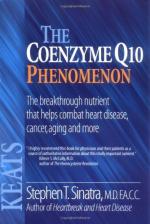|
This section contains 585 words (approx. 2 pages at 300 words per page) |

|
While all enzymes belong to the protein family, many of them are unable to participate in a catalytic reaction until they link with a nonprotein component, or coenzyme. This can be a metal ion--copper, iron, or manganese, for instance--or a moderately-sized molecule called a prosthetic group. Quite often, though, coenzymes are composed wholly or partially of vitamins. Although some enzymes are attached very tightly to their coenzymes, others can be easily parted. In either case, the parting almost always deactivates both partners.
The first coenzyme was discovered by English biochemist Sir Arthur Harden. Toward the end of the nineteenth century, Harden began an intense study of the fermentation process, particularly alcoholic fermentation. Inspired by Eduard Buchner--who, in 1897, had discovered an active enzyme in yeast juice that he had named zymase--Harden used an extract of yeast in most of his studies.
While working with William J. Young in...
|
This section contains 585 words (approx. 2 pages at 300 words per page) |

|


